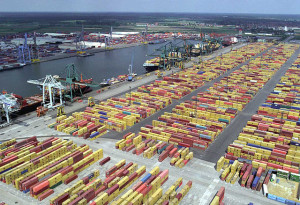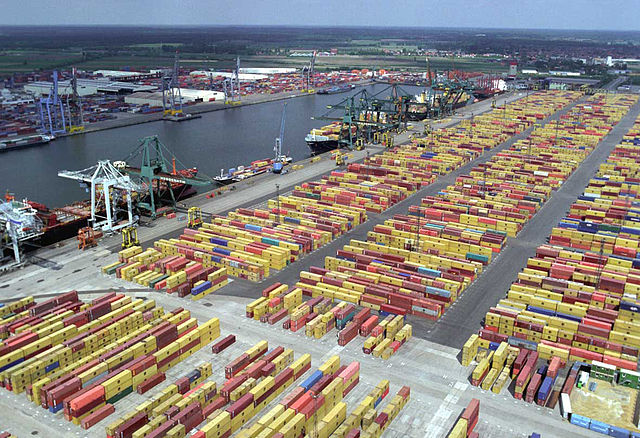 Intra-Asian trade routes are regarded as a major catalyst for global trade expansion over the last decade in terms of box growth, but the mainlane trades come up as the biggest contributor to volume growth when measured in TEU-miles, or in boxes carried based on adjusted distance, according to a new analysis by Clarkson.
Intra-Asian trade routes are regarded as a major catalyst for global trade expansion over the last decade in terms of box growth, but the mainlane trades come up as the biggest contributor to volume growth when measured in TEU-miles, or in boxes carried based on adjusted distance, according to a new analysis by Clarkson.
“Container trade has grown firmly over the last decade, with much of this expansion driven by trade on the intra-Asian network. However, when analyzing this growth in terms of TEU-miles, global expansion has been fairly evenly spread between various routes, with the deep sea mainlane trades in particular punching above their weight in terms of TEU-mile growth,” it said.
In 2005 container trade totaled 105 million TEUs, and this year it is expected to reach 179 million TEUs. The mainlane routes, which had historically represented a major growth area of container trade, have expanded at a relatively modest rate in the last decade, at a compound annual growth rate (CAGR) of 3% per annum, compared to growth of 5.5% per annum in total box trade.
Overall, mainlane trade growth has accounted for 19% of total container trade expansion over the 2005-2015 period. Intra-regional trade (mostly intra-Asian routes) has been by far the largest contributor to container trade growth, accounting for 47% of expansion in global trade in TEU and growing at a CAGR of almost 7% per annum in the period.
However, the pattern of trade growth has been much more evenly spread between the routes when looking at expansion in TEU-miles, noted Clarkson.
“Demand for container shipping is driven by not only the number of boxes moved, but also the distances involved; mainlane routes are much longer than intra-regional trade lanes,” it pointed out.
The consultancy said that if standard distance assumptions are used for each trade lane, and trade growth in TEU is weighed by the miles traveled, mainlane trade appears as the biggest driver of TEU-mile growth in the 2005-2015 period, while the contribution of intra-regional trade is reduced to 27%. Together, the deep-sea mainlane and North-South routes have accounted for 55% of growth in TEU-miles over the 10-year period, versus 36% in TEU terms.
“This large difference between the contribution of mainlane routes to growth in TEU and TEU-miles may help to shed some light on recent ordering trends,” it said. “Contracting of ‘mega ships’ has principally been driven by the continued pursuit towards lower unit costs. However, the vast majority of very large box ships are deployed on mainlane routes (92% of capacity in the 12,000+ TEU sector is deployed on the Far East-Europe route), where although trade volume growth has typically been slower than elsewhere, a notable ‘TEU-mile’ benefit is visible.”
“So, the rapid growth in box trade on intra-Asian routes still stands out as a principal driver of global trade expansion over the last decade. But looking at the figures in a different way suggests a perhaps more balanced picture for boxship demand across the various trade lanes. That is why container shipping needs the deep sea trades to keep clocking up the miles,” said the report.
Photo: Arminius





